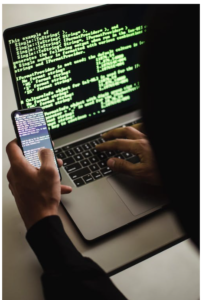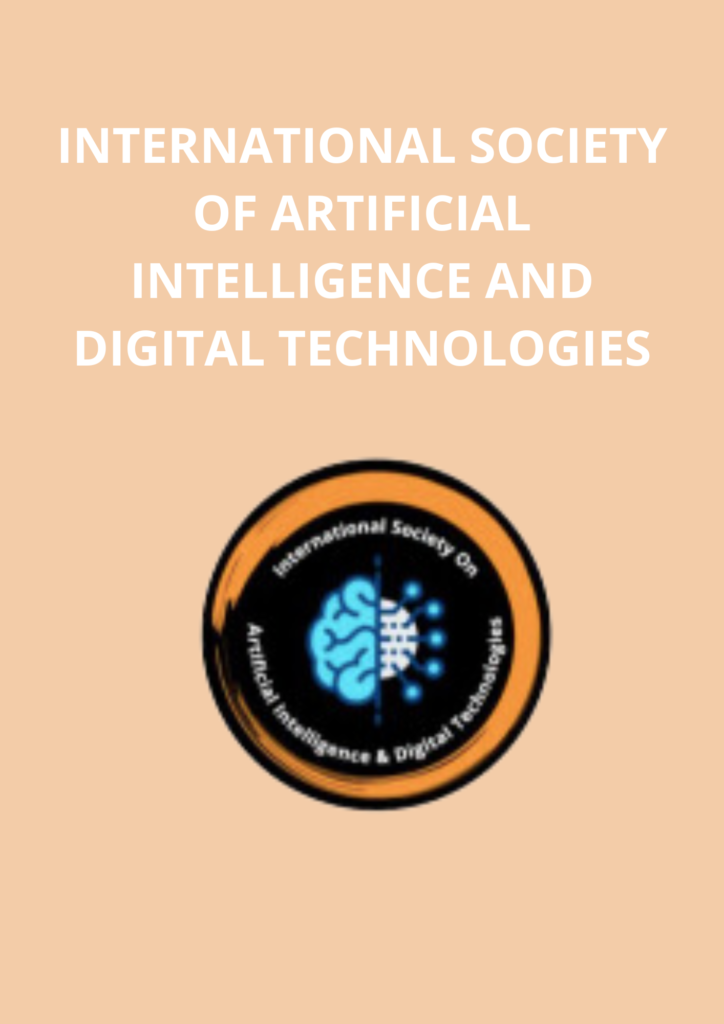INTRODUCTION Cybercrime refers to criminal activities that are carried out using the internet or other digital technologies. This can include a wide range of illegal activities, such as hacking, phishing, identity theft, spreading malware, online fraud, and various forms of cyber attacks. Cybercrime poses significant threats to individuals, businesses, and governments, and often involves sophisticated techniques to exploit vulnerabilities in computer systems and networks.
LAW MADE FOR CYBER CRIME
Laws related to cybercrime vary by country, but many nations have enacted legislation specifically addressing cybercrime. These laws typically cover a wide range of offenses, including unauthorized access to computer systems, data theft, hacking, spreading of malware, online fraud, identity theft, and other digital crimes.
In the United States, for example, the Computer Fraud and Abuse Act (CFAA) is a federal law that addresses unauthorized access to computer systems and data. Additionally, the Cyber security Information Sharing Act (CISA) and the Electronic Communications Privacy Act (ECPA) are among the laws that regulate cyber security and digital privacy.
In the European Union, the General Data Protection Regulation (GDPR) sets standards for data protection and privacy, while the Network and Information Security (NIS) Directive focuses on ensuring a high common level of network and information security across EU member states.
In India, the Information Technology Act, 2000 (IT Act) is the primary legislation that addresses cybercrime. The IT Act was amended in 2008 to include provisions related to cybercrime and electronic data security. It covers a wide range of offenses such as unauthorized access to computer systems, data theft, hacking, spreading of computer viruses, identity theft, and online fraud.
Under the IT Act, specific offenses related to cybercrime include:
1. Unauthorized access to computer systems or networks.
2. Data theft and unauthorized copying of data.
3. Intentional transmission of computer viruses or malware.
4. Identity theft and impersonation.
5. Online fraud and phishing.
6. Publishing or transmitting obscene material in electronic form.
Additionally, the IT Act provides for the establishment of the office of the Controller of Certifying Authorities (CCA) and the Cyber Appellate Tribunal to oversee matters related to digital signatures and electronic authentication. In recent years, India has also introduced the Personal Data Protection Bill, which aims to regulate the processing of personal data and ensure the protection of individuals’ privacy rights in the digital sphere.
Many countries also have specific laws and regulations that address cybercrime, and international cooperation is often necessary to address cyber threats that transcend national borders. It’s important to note that the legal landscape surrounding cybercrime is constantly evolving as new technologies emerge and new threats arise.
HOW CYBER CRIME IS CONNECTED TO TERRORISM
Cybercrime is often connected to terrorism through various means, as terrorists and extremist groups have increasingly utilized the internet and digital technologies to further their activities. Some of the ways in which cybercrime is connected to terrorism include:
1. Online Radicalization: Terrorist organizations use the internet to disseminate propaganda, recruit new members, and radicalize individuals through social media, websites, and online forums.
2. Cyber-Recruitment: Terrorist groups may use the internet to identify, communicate with, and recruit individuals for terrorist activities, including through encrypted messaging apps and dark web platforms.
3. Cyber-Attacks: Terrorist organizations or individuals sympathetic to their cause may engage in cyber-attacks targeting critical infrastructure, government agencies, or private organizations to disrupt operations, steal sensitive information, or cause economic harm.
4. Fundraising: Cybercrime methods such as online fraud, identity theft, and crypto currencyrelated crimes can be used to raise funds for terrorist activities.
5. Communication and Coordination: Extremist groups use encrypted communication channels and secure messaging apps to plan and coordinate attacks, making it difficult for law enforcement and intelligence agencies to monitor their activities.
Given these connections, addressing cybercrime is an important aspect of combating terrorism and ensuring national security. In response, many countries have enacted laws and established specialized units within law enforcement agencies to investigate and counter cyber-enabled terrorist activities. Additionally, international cooperation and information sharing among law enforcement agencies are crucial in addressing the nexus between cybercrime and terrorism.
A REPORT OF CYBER TERRORISM
cyber terrorism is the 2014 cyber attack on Sony Pictures Entertainment. The attack, which has been attributed to North Korea, involved the theft and release of sensitive corporate data, as well as the destruction of computer systems. The attackers also threatened violence against theaters that planned to screen Sony’s film “The Interview,” a comedy about a fictional plot to assassinate North Korean leader Kim Jong-un.
This cyber attack is considered an act of cyber terrorism due to its politically motivated nature and the significant impact it had on a major corporation. The attack was designed to intimidate and coerce Sony Pictures Entertainment and to suppress freedom of expression by threatening violence against those associated with the film. The attack also caused significant financial and reputational damage to the company.
The Sony Pictures Entertainment cyber attack illustrates how cyber terrorism can be used to achieve political goals, instill fear, and disrupt the operations of a targeted organization. It also highlights the potential for cyber attacks to be used as a form of censorship and coercion in the digital age.
CONCLUSION
the connection between cybercrime and terrorism is a complex and evolving challenge for law enforcement and security agencies worldwide. The use of the internet and digital technologies by terrorist organizations and sympathizers has expanded their capabilities to radicalize individuals, recruit members, conduct cyber-attacks, raise funds, and coordinate activities. Addressing this nexus requires a multifaceted approach that includes robust cyber security measures, enhanced intelligence sharing, international cooperation, and the development of specialized capabilities to investigate and counter cyber-enabled terrorist activities. By understanding and addressing the links between cybercrime and terrorism, governments and law enforcement agencies can better protect national security and prevent the misuse of digital technologies for terrorist purposes.
REFERENCES
THE CYBER LAW THE INFORMATION TECHNOLOGY ACT,2000(IT ACT)
• SECTION 66F A Friend Or Foe By Pavan Duggalhttps://www.businessstandard.com/article/economy-policy/pavan-duggal-section-66a-of-it-act-yourfriend-or-foe-112112800134_1.html
• Protected System And Networks By Pavan Duggalhttps://m.economictimes.com/protected-systems-andnetworks/articleshow/43196757.cms
• Data Centres Architecture & Security By E Gov https://egov.eletsonline.com/2012/03/data-centres-architecture-security/
• Cyber security And Cyber Terrorism By Fairlegh Dickinson Online https://online.fdu.edu/program-resources/cybersecurity-and-cyberterrorism/#:~:text=As%20the%20Journal%20of%20Cybersecurity,law%20enforc ement%20agencies%20to%20protect
• “Cybercrime: Investigating High- Technology Computer Crime” by Robert Moore https://books.google.co.in/books?id=fyqgBAAAQBA J&printsec=copyright&redir_esc=y#v=onepage&q &f=false
• “Cyber terrorism: An Overview and Analysis of Emerging Threats and Trends” by Mark Pollitt https://scholar.google.co.in/scholar_url?url=https://d oras.dcu.ie/501/1/cybert_hype_reality_2007.pdf&hl= en&sa=X&ei=PfWzZdbtEYye6rQP_KUyAQ&scisi g=AFWwaeY1m_qni8fCtDbE2iNI95Yt&oi=scholarr
• “The Global Risks Report 2022” by the World Economic Forum – https://www.weforum.org/publications/global-risks- report-2022/ • “Cybercrime and Cybersecurity: Current Trends and Emerging Threats” by Thomas J. Holt and Adam M. Bossler https://books.google.co.in/books?hl=en&lr=&id=XR 1tEAAAQBAJ&oi=fnd&pg=PT20&dq=Cybercrime+and+Cybersecurity:+Current+Trends+and+Emerging+Threats%22+by+Thomas+J.+Holt+and+Adam+M.+Bossler&ots =GrK_2Td1n7&sig=D3YEoSCtn8 Zvb-keVYc6afFMNzg#v=onepage&q&f=false
WRITTEN BY –
ANURADHA JENA
2ND YEAR
JAGANNATH UNIVERSITY BAHADURGARH








